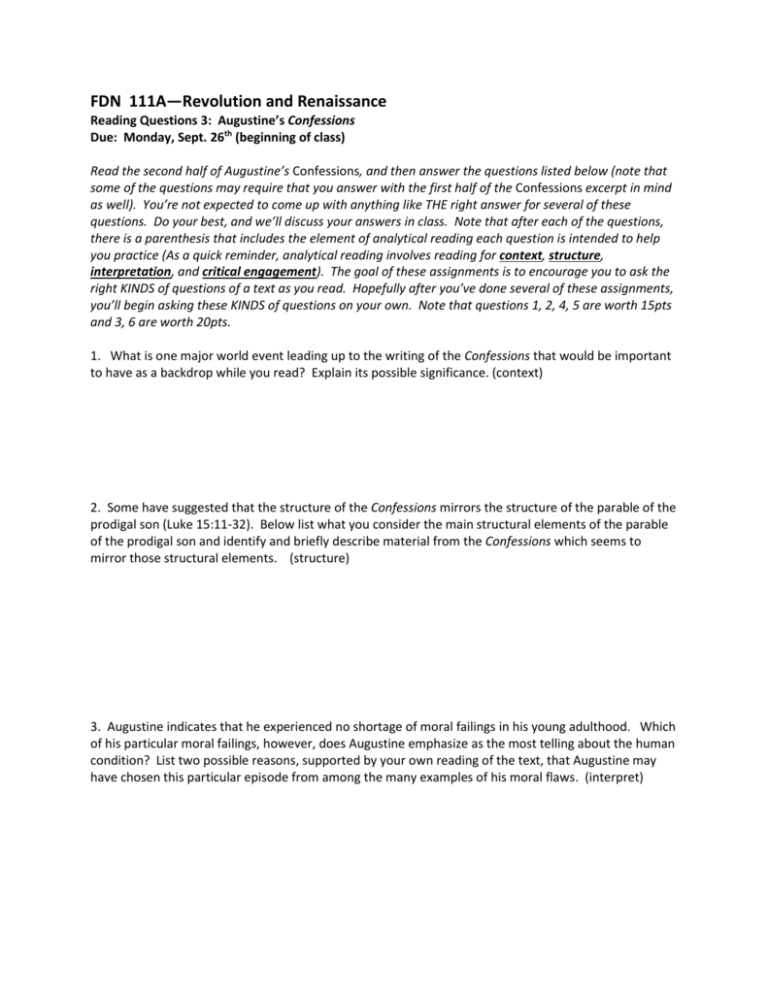FDN 111B*Revolution and Renaissance
advertisement

FDN 111A—Revolution and Renaissance Reading Questions 3: Augustine’s Confessions Due: Monday, Sept. 26th (beginning of class) Read the second half of Augustine’s Confessions, and then answer the questions listed below (note that some of the questions may require that you answer with the first half of the Confessions excerpt in mind as well). You’re not expected to come up with anything like THE right answer for several of these questions. Do your best, and we’ll discuss your answers in class. Note that after each of the questions, there is a parenthesis that includes the element of analytical reading each question is intended to help you practice (As a quick reminder, analytical reading involves reading for context, structure, interpretation, and critical engagement). The goal of these assignments is to encourage you to ask the right KINDS of questions of a text as you read. Hopefully after you’ve done several of these assignments, you’ll begin asking these KINDS of questions on your own. Note that questions 1, 2, 4, 5 are worth 15pts and 3, 6 are worth 20pts. 1. What is one major world event leading up to the writing of the Confessions that would be important to have as a backdrop while you read? Explain its possible significance. (context) 2. Some have suggested that the structure of the Confessions mirrors the structure of the parable of the prodigal son (Luke 15:11-32). Below list what you consider the main structural elements of the parable of the prodigal son and identify and briefly describe material from the Confessions which seems to mirror those structural elements. (structure) 3. Augustine indicates that he experienced no shortage of moral failings in his young adulthood. Which of his particular moral failings, however, does Augustine emphasize as the most telling about the human condition? List two possible reasons, supported by your own reading of the text, that Augustine may have chosen this particular episode from among the many examples of his moral flaws. (interpret) 4. Read Book III, ch. 5 and Book VIII, ch. 12 again. Children play important roles in each of these chapters. What central virtue does Augustine seem to emphasize through the imagery of the child in both chapters (and indeed throughout the Confessions)? Briefly explain and defend your answer. (interpret) 5. Give a brief, yet well-defended, account of Augustine’s view on the value of pagan (pre-Christian) literature and philosophy. Does he find it worthless, dangerous, valuable, beautiful? All of these? None of these? Some mix of these? Something else? Briefly explain and defend your answer. (interpret) 6. Augustine’s decision to follow Christ fully (Book Eight) appears to have been brought about by imitating the actions of others, acting on a child’s voice, and paying attention to a randomly-chosen passage of Scripture. Does Augustine have any precedent for such a practice? (You might want to refer to the first 4 sections from the Life of Anthony: http://www.fordham.edu/halsall/basis/vita-antony.html ). Do you think this is good religious practice? Briefly explain and defend your answer. (critical engagement)











